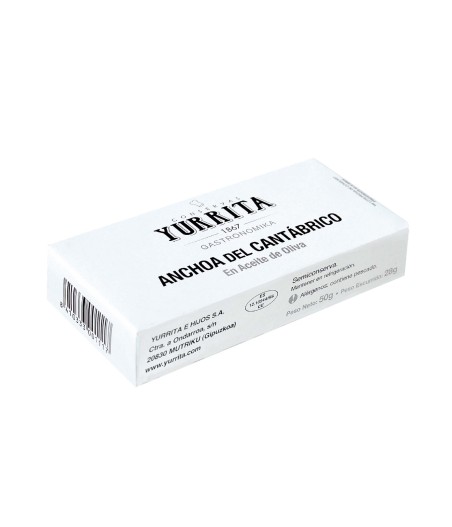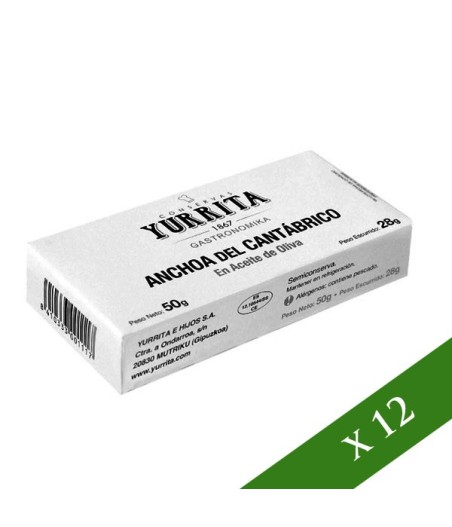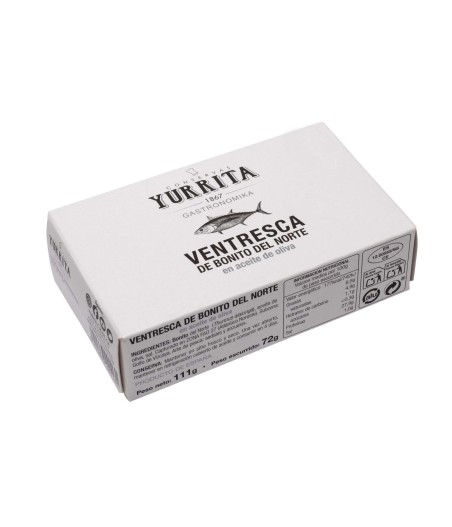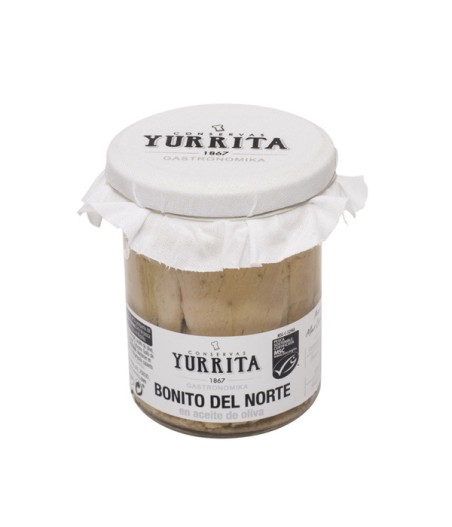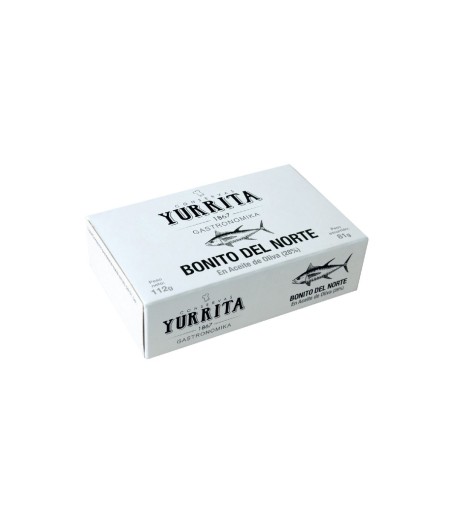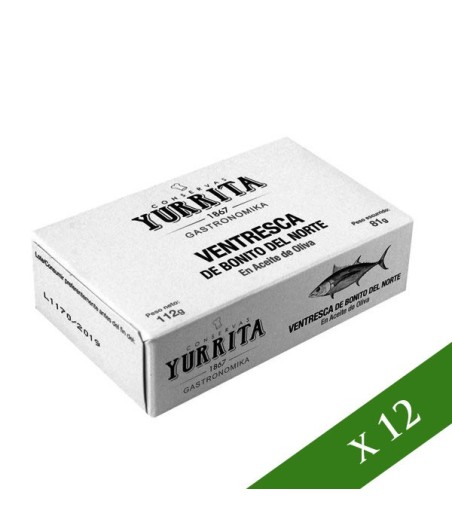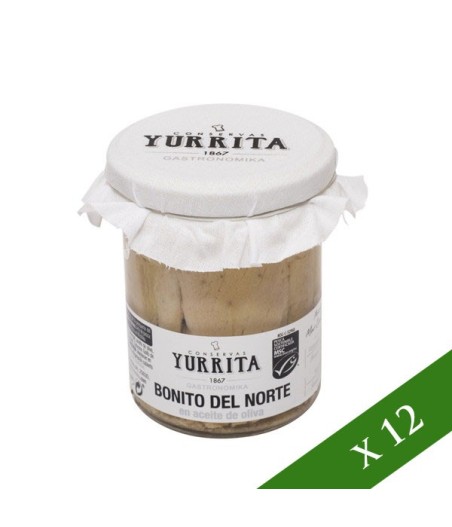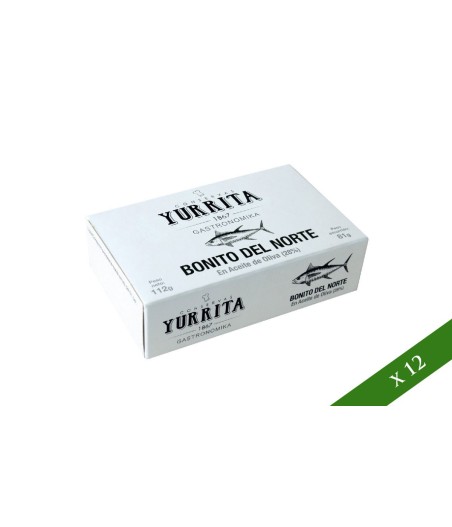Yurrita Anchovies. 150 Years of Tradition
- History of the Cantabrico Yurrita Anchovies
- Production process of Yurrita Anchovies
- Protected Geographical Indication of Yurrita Cantabrian Anchovies
- Identification of Yurrita Cantabrico Anchovies
- Annual production of Anchovies from Cantabrico Yurrita
- Anchovy Tasting of Santoña, the Great Tasting of the Anchovy Fair
- Cantabrico Yurrita Anchovies Awards
- Recipes with Anchovies from Cantabrico Yurrita
The Yurrita anchovies have five generations and more than 100 employees. From their Mutriku factory in Guipúzcoa, they remain faithful to their roots and export their excellence to more than 60 countries without losing their quality. It is one of the three Spanish companies with the highest volume of anchovy production, the oldest canning company in the Basque Country and one of the longest-lived food companies in the country.
1. History of the Yurrita Anchovies
Conservas Yurrita was founded in a family home in 1867. This house received the name of Casa Mauleón after its founder, Don Jose Miguel Mauleón, and it is surely today the oldest building among those that were dedicated to the production of canned fish.
Those were the beginnings of the canning company, but the story would be continued by Mr. Mauleón's daughter, Francisca, who would marry Agapito Yurrita, (who ended up naming the brand). Both would consolidate the family business dedicated to the production and sale of fish, both pickled and salted, and from Mutriku. They would make it reach all of Spain, in horse carts.
It mattered little for the development of the canning company, since a few years later, (in the 1950s), another descendant, Don Alfonso Yurrita Zumalabe, would open it up to the foreign market. A truly important step for the company in the post-war years, since undoubtedly these were difficult times for the country. Thanks to that decision, today they have a solid network of clients in more than 60 countries around the world, to which they distribute a wide variety of Gourmet products.
Yurrita is today a family business that is now in its fifth generation, and has more than 150 years of history.
Our canned anchovies Yurrita
2. Production process of Cantabrian Anchovies
At Yurrita, the raw materials are obtained through traditional fishing gear, which respectful to the Marine Reserves. It is that, now that it is so fashionable to be sustainable, at Yurrita, they can say that they have always been, making all their products by hand.
The artisanal process, through which the Cantabrian Anchovy is made can be summarized in the following steps:
1. Reception of the fish from the boats. The anchovies from the North of Spain are called bocartes, and their reception from the boats continues as in the past, in the port, where the anchovy scouts will buy the fish once they have selected the best pieces.
2. Next, they are washed in a Brine (water and salt), where they will remain for one or two days, to later remove the heads and the viscera and leave them completely clean.
3. They will be stored in barrels for Salting. (With just the right amount of salt, to maintain its properties without drying it out excessively). The approximate amount is one layer of anchovies and one layer of salt, until the barrel is filled.
4. Maturation. After one hundred days, the product will have matured and acquired the typical reddish color, and the characteristic aroma, but it must remain maturing for at least 6 to 8 months. In the case of some Yurrita Anchovies, such as the 00, will always be 12 months, or even 24 months, in the Mariposa presentation (so called because of the way they are filleted).
5. Blanched or rubbed. The sobado is the procedure through which the skin is removed from the mouth. If it is done industrially, it is called “scale”, and the raw material usually loses a lot of quality. At Conservas Yurrita, the whole process is done manually, one by one, maintaining its quality and its fair measure of salt.
6. Once they are caressed, the tail and the burrs will be cut off, and they will be wrapped in cotton rags to remove the remaining moisture. Using scissors and a fine knife, the anchovy masters will fillet the pieces one by one in the cans, in the absence of oiling and sealing.
Ideally they should be consumed a maximum of 4 months after packaging, since later they could be salted and softened I know too much. Although the quality is the same in a can as in a glass jar, the latter format allows you to see at a glance the anchovy fillets with all their meticulous cleaning work in detail.
3. Protected Geographical Indication of Cantabrian Anchovies
Cantabrian Anchovies are known for the quality of the raw materials and the artisan production process. A quality seal has not yet been achieved although they have been working for several years on a quality seal that certifies it. Geographical Indication that protects this good work.
Currently, up to a total of 27 canneries and 3 associations of the extractive and productive sector of Cantabria have shown their interest in promoting this initiative to recognize the Cantabrian Anchovy. This certification will be in line with a new consumer culture that demands quality products with a guarantee of origin.
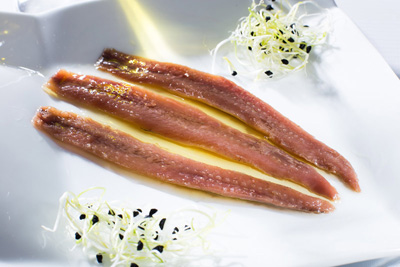
4. Identification of Yurrita Anchovies
Cantabrian Anchovies do not yet have a Protected Geographical Indication (PGI), but Yurrita does have different identifying stamps to its credit that recognize the quality or sustainability of the product, such as:
- Quality. Recognized by the BRC Global Standard for Food Safety. A certification standard developed in the United Kingdom that endorses the environmental conditions of facilities, products, processes, and personnel.
- Kosher. Conservas Yurrita complies with the food quality control system according to the KOSHER Jewish standards.
- Sustainable Fishing. The MSC certification recognizes the sustainable use of marine resources and their conservation, covering the entire process of bringing fish from the sea to the table.
- Organic agriculture. Likewise, Conservas Yurrita has the Euskadi ENEEK certification, which certifies sustainable production.




All our Yurrita products
6. Anchovy tasting of Santoña, the great tasting of the Anchovy Fair
Yurrita Anchovies are from Guipúzcoa, but their raw material comes from the Cantabrian Sea. And precisely, it is in honor of the canned food of Cantabria that the Anchovy and Canned Food Fair of Cantabria is celebrated every year in Santoña.
During this fair, a tasting contest is held in which the "Best Anchovy of the year" will be chosen. The contest is curious. The tasting is blind and the jury does not know in advance the name of the participating canneries. The only one who will know all the information will be a notary who will be present throughout the process.
The anchovies will be presented on a numbered plate, showing both parts, the inner and outer sides.
And in the first place, 6 finalist anchovies will be selected, and then, from among those 6, the winner will be chosen.
Some of the aspects that are taken into account to select the winning anchovy are:
-
The appearance of the anchovy, the color and its cleanliness (without sensitive thorns or beards). It should have been hand rubbed, and not scalded. An unequivocal sign of this will be to find silver areas on its back.
-
The smell should be fish, oil and salt.
At the end of the tasting, the final result will be signed and announced in the Plaza de San Antonio. The emotion is maximum, since this award highlights the work behind each anchovy, and represents a great media boost for the winning canning company.
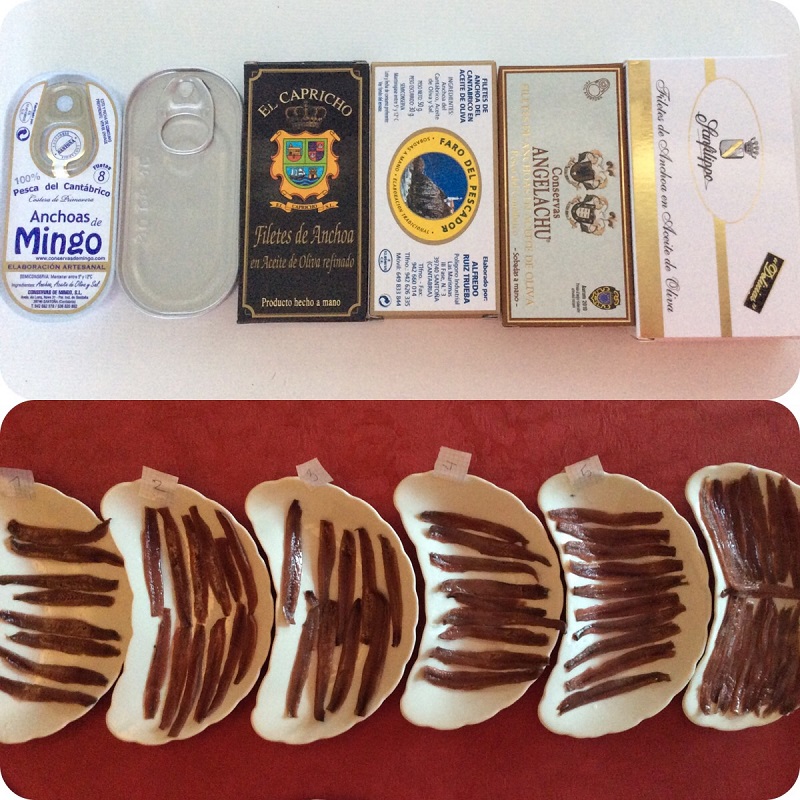
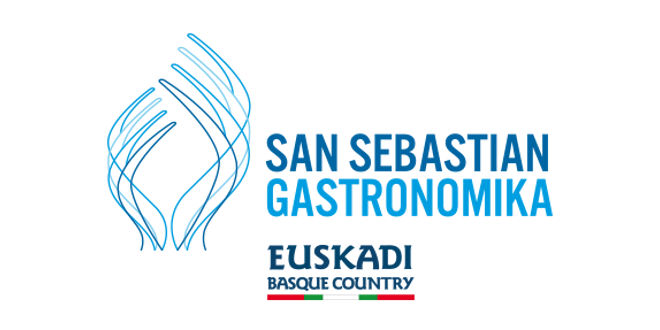
8. Recipes with Yurrita Anchovies
The possibilities of incorporating Yurrita Anchovies into your dishes are varied. This time, we prefer to be a bit more classic and stick to a typical suggestion from the Basque Country, a gilda pintxo, that is, a tapa made up of a good Cantabrian anchovy, a good piparra and a tasty Manzanilla olive.
Other recipes with Yurrita anchovies:
Quince, cheese and anchovies tapa
Ingredients:
Preparation:
- Cut the cheese into small cubes or rectangular pieces. Ideally, all the pieces of cheese may be similar.
- We cut the quince similarly to the cheese.
- Assemble the skewer with a piece of cheese, a piece of quince and an anchovy (or whatever you want).
Toast with guacamole, anchovies and piquillo peppers
Ingredients:
- Bread
- Guacamole
- Yurrita anchovies
- Piquillo Peppers Marzo
- Extra Virgin Olive Oil
Preparation:
- We cut the bread into slices (If you buy it uncut).
- We spread the guacamole
- We add the anchovies
- We dry the piquillo peppers and cut them into strips.
- We put some strips on the guacamole and the anchovies
- We water in Extra Virgin Olive Oil
Mounted with anchovy and duck foie paté
Ingredients:
- Toasts
- Duck foie gras
- Blueberry jam
- Yurrita anchovies
Preparation:
- Spread the foie gras on the toast
- We add a little blueberry jam
- We put a yurrita anchovy fillet on each toast
 4,9 / 5
4,9 / 5 





